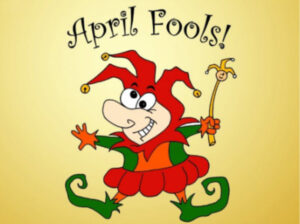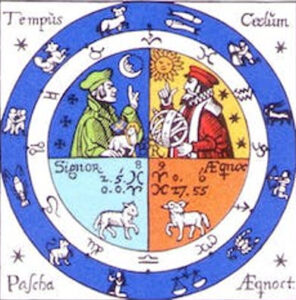The Origin of April Fool’s Day
Sat 5:07 pm +01:00, 1 Apr 2023 4
Accounts of the Origin of April Fool’s Day are many and varied across the UK and Europe, however, mostly are related to New Year’s Day celebration. But, one will say New Year’s Day is January 1st. No it wasn’t always, for in the late BC and early AD period, New Year’s Day was at the spring equinox with festivities going on to April 1st. The Hebrew calendar, where New Year’s Day was at the Spring Equinox, was used widely throughout Europe. In those days, communications were slow, so when the calendar altering decree was made, many people long after were celebrating the New Year long after at the old time, so those caught on the end day of celebration which was April 1st were called April Fools.
We see a remnant of this in our financial year running from April 1st to 31st of March and the Inland Revenue from April 6th – April 5th
Across Europe changes have been made at Different times down the centuries making it quite complicated to reconcile historical dates to the modern calendar. The article below gives a more detailed account of calendar changes down through the centuries. Even this misses out the UK change in the 1600’s. A great tool for distorting history!!
Why The UK Tax Year Begins on April 6 (It’s A Very Strange Tale)
You might think, logically, that the beginning of the tax year would coincide with the calendar year – and in some countries it does. In the UK, however, the scramble to get your affairs in order comes to its conclusion on April 5, with the new tax year starting on April 6. To understand the reason for this apparently random date, you have to go back to medieval times.
In England and Ireland, the New Year used to start on March 25, also known as “Lady Day” in commemoration of the angel Gabriel’s announcement to the Virgin Mary that she would become the mother of Jesus Christ. Along with Midsummer on June 24, Michaelmas on September 29, and Christmas Day on December 25, Lady Day was one of the four most important days in the religious calendar. All accounts, including debts and rents, had to be settled by these so-called “quarter days”, and Lady Day was the first, gradually becoming regarded as the start of the financial year (although the precise reason for this remains unknown).

Lady Day. The Yorck Project
The move forward to April 6 results from changes to the calendar and the actual number of days in various years. Until 1582, Europe had used the Julian calendar established by Julius Caesar. Under the Julian calendar, the year had 11 months of 30 or 31 days, with one month, February, consisting usually of 28 days but with 29 every fourth or “leap” year. This had worked well for centuries, but because it did not align exactly with the solar calendar (the time it takes for the Earth to move round the sun), over time problems developed.
Playing catch-up
The Julian year was only 11½ minutes longer than a solar year, but by the late 1500s, this had all added up and the Julian calendar was some ten days adrift from the solar calendar. The Roman Catholic church was especially concerned because the celebration of Easter had been gradually getting later than when it had been celebrated by the early church.
And so in October 1582 Pope Gregory XIII instituted a change (to the “Gregorian” calendar) to solve the problem: three leap days were omitted every 400 years by the authority of a papal bull known as “Inter Gravissimas”. While Europe adopted the Gregorian calendar, however, England, with its history of conflict with the Roman Catholic church, did not (nor did Russia), and continued with the Julian calendar

The Gregorian Calendar. Cropped from Wikimedia Commons
By 1752, when it was 11 days out of alignment with the rest of Europe, England finally accepted that it would have to make a change. The decision was made to drop 11 days from the month of September to catch up, and so September 2 was followed by September 14 that year. To ensure that there was no loss of tax revenues, however, the Treasury extended the 1752 tax year by adding on the 11 days at the end. Consequently, the beginning of the 1753 tax year was moved to April 5.
In 1800 a further adjustment was made, shifting the start of the tax year forward by one more day to April 6, once again to mitigate for the differences between the Julian and Gregorian calendars. The year 1800 would have been a leap year under the Julian calendar system, but not the Gregorian one, so the Treasury treated 1800 as a leap year for purposes of taxation to get an extra day’s revenue. April 6 has remained the beginning of the tax year ever since, though it was only formalised in 1900. Although some countries, including the US, Canada, France and Germany, have adopted the calendar year as their tax year, the UK and others such as Australia have not.
Another oddity is the UK government’s own financial year, which runs from April 1 to the following March 31, and so does not coincide with the tax year, although 1 April to 31 March is also the fiscal year for corporation tax. The reason for this is less clear than why April 6 was adopted as the start of the tax year – and is perhaps a tale for another day.











Excellent newensign. Just note also, clocks change last Sundays in march and October, and Easter is on the first Sunday after the first full moon, after the Spring Equinox, Mar 21st.
I hate all fools day as I think they, the elite, are really taking the P and having a laugh at us, all fools.
Anyway, Happy New Year is the call every year here in the west on the first of January followed by the Orthodox Russian New Year on the 14 January while the Chinese New Year begins on the new moon that appears between 21 January and 20 February. Then of course the Jews have four New Years.
https://orjewishlife.com/did-you-know-there-are-four-jewish-new-years/
But what about God’s New Year given to Moses. Exo 12:2 This month shall be unto you the beginning of months: it shall be the first month of the year to you. Nowt about January or February or any other Romanised months, just “First Month”.
The clue comes in the word “Month” which is derived from the word Moonth. Therefore God was talking to Moses and his brother Aaron in the evening not long after sunset when the crescent moon (indicating the start of the month) was in view. Not only that but the crescent moon had to be in a precise location in the heavens for it to be remembered that at that time of year it was the New Year. That position is close to the Pleiades in the constellation of Taurus.
This is as much as I can give you as the subject requires much more and to many very controversial.
You are right Gordon, they have indeed fooled us into going on to the non biblical calendar – the fools were right and the rulers were the fools in changing our God given calendar, which is now a confusion, with leap years etc. There were only two small adjustments at the Spring and Autumn equinoxes hardly noticeable. Christ referred to the lunar observers as children of the night! Such are unstable mongrelised people. Hence we get the word Lunatic!!
Thanks Ian. You are right Ian, it changed about the time of Constantine who ruled from York (not Rome) although he did spend some time in Constantinople. He had little power in Britain, as the people were the power in the land under the law of the Bible from which we get the Common Law and under the Law of the Bible all feast days were on a fixed day relating to the Spring equinox the first being the Passover was on a fixed day, as are all Biblical holydays (holidays) being on a fixed date. The Hebrew Christians were referred to by Christ as the Children of the light as their calendar was solar while he called the Edomite/Jews the children of the night because they went by the Lunar calendar and being so mongrelised caused mental problems, hence we get the word lunatic as it predominantly affected those who follow the lunar calendar!